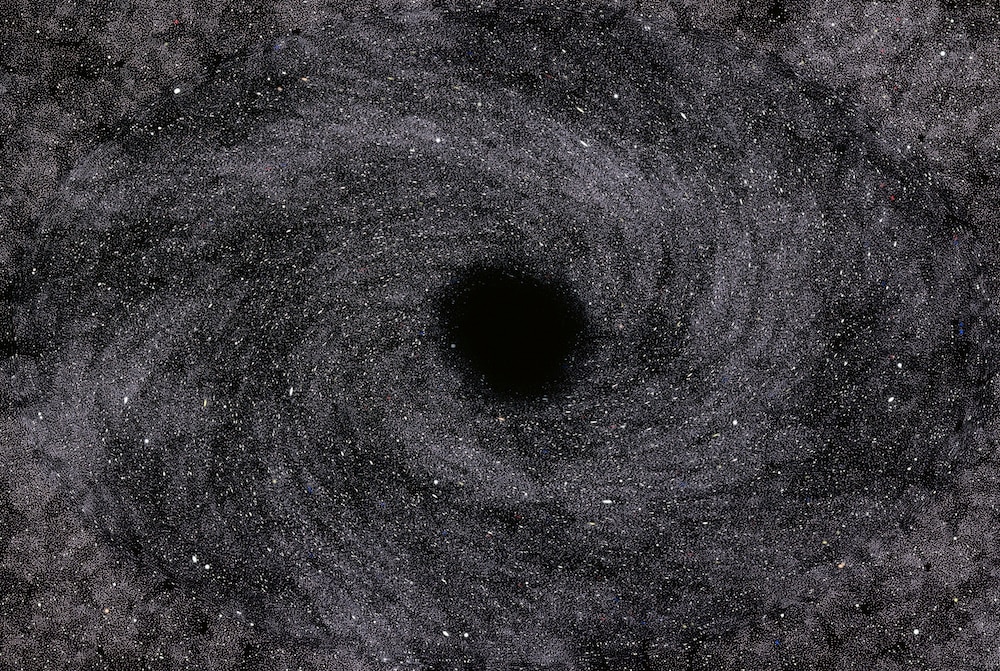Create a free profile to get unlimited access to exclusive videos, sweepstakes, and more!
Gargantuan black holes could be growing and growing as the universe expands
Unexpectedly huge black holes might have gotten gargantuan from the universe expanding.

As the universe expands, so could those invisible, insatiable mouths just waiting to swallow anything that ventures too close.
Can a black hole get too gargantuan? Mergers between these beasts are one thing, but observations through the LIGO (Laser Interferometer Gravitational Wave Observatory) and Virgo observatories have revealed that many merging black holes were unexpectedly huge. By measuring gravitational waves, such observatories give us an idea of where the universe’s expansion is at. Indeed, expansion could be behind the mysterious growth of black holes.
No light can escape a black hole, so gravitational waves (basically ripples in the fabric of spacetime) are what give away a merger. Previous explanations rarely made sense because black holes were usually in a static universe. Kevin Croker of the University of Hawaii at Mānoa, who led a study recently published in The Astrophysical Journal, and co-authors Gregory Tarle and Michael Zevin now think black holes could be expanding with the universe. This phenomenon is known as cosmological coupling.
“Observations and data from many other experiments have confirmed that we definitely live in a non-empty universe,” Croker told SYFY WIRE. “We know cosmological growth is a possible behavior because people have found other solutions to Einstein's equations that grow cosmologically inside a non-empty universe.”
What initially made behemoth black holes so unusual is that they were never predicted to reach over 40 solar masses. They are all that remains of massive stars which wouldn’t have been able to hold themselves together if they grew too enormous, but what LIGO and Virgo saw challenged that theory. A universe that does nothing would be easier to keep track of, so no wonder hypothesis after hypothesis couldn’t work out. Predictions of black holes in a universe that is supposedly not expanding may start out making sense — but only temporarily.
When trying to come up with solutions to Einstein’s equations, mathematician Roy Kerr created a solution that, among other things, exists in a static universe. The Kerr model is often used as an approximation of the universe because there are so many unknowns. Though Croker is wary of solutions that claim to be viable alternatives for the Kerr model, he does believe that models of a dynamic universe can give a better idea as to what is actually happening. However, it seems almost paradoxical that light loses energy as the universe (and possibly black holes) expands.
“The cosmological loss of energy in light is an observational fact,” Tarle also told SYFY WIRE. “One can envision the light stretching along its direction of motion as the universe expands, so its wavelength increases. But energy is inversely related to wavelength, so the energy decreases.”
Not only might the expansion of the universe be birthing more black holes, but it might be pushing more black hole mergers. Mergers are thought to happen because of an increase in black hole mass. More mass forces them to orbit ever more dangerously close to one another, and faster, until their death spiral finally ends and the monsters become one behemoth. Both the additional mass and the closer proximity of the black holes to one another create stronger gravitational waves. Observatories like LIGO and Virgo can then pick up on these signals.
Where do these black holes even come from? That is just one of the mysteries Croker and his colleagues are looking to solve in the future. There might be some connection between the types of environments these especially huge black holes are found in and how massive stars, many of which will collapse into themselves and die as black holes, evolve. Not everything that that LIGO and Virgo observed in the merging binaries can be completely explained yet. There are many strange aspects of their formation and other properties that are still in the dark.
"As hundreds more black hole observations are on the horizon, we hope to get a better grasp on the dominant formation pathways for forming these extreme objects and what possible effects were impacting them throughout their evolution,” Zevin told SYFY WIRE.
Even Zevin feels this is just the beginning. There could be weirder systems out there, and no one knows what about black holes will have to be demystified next.


























